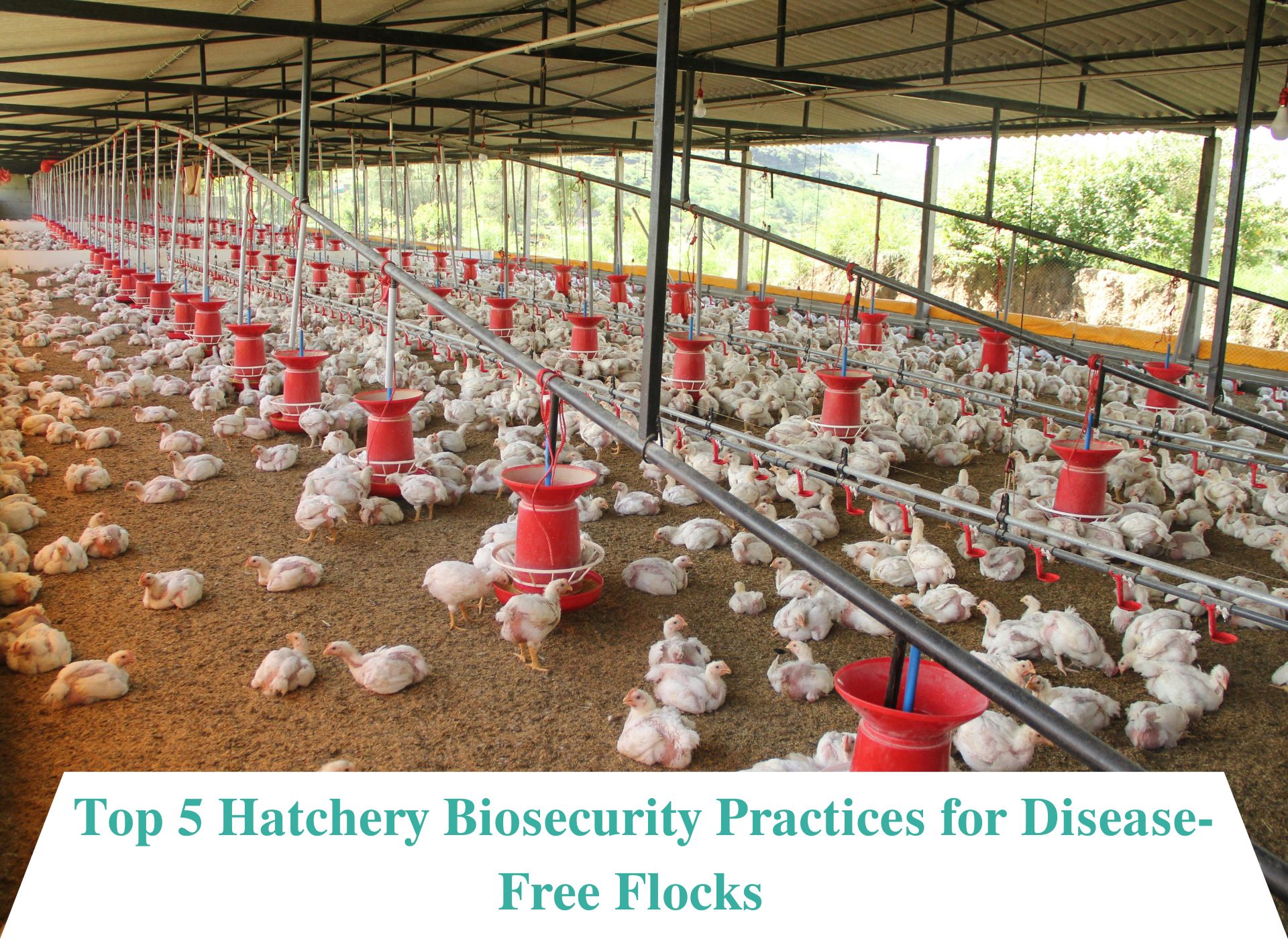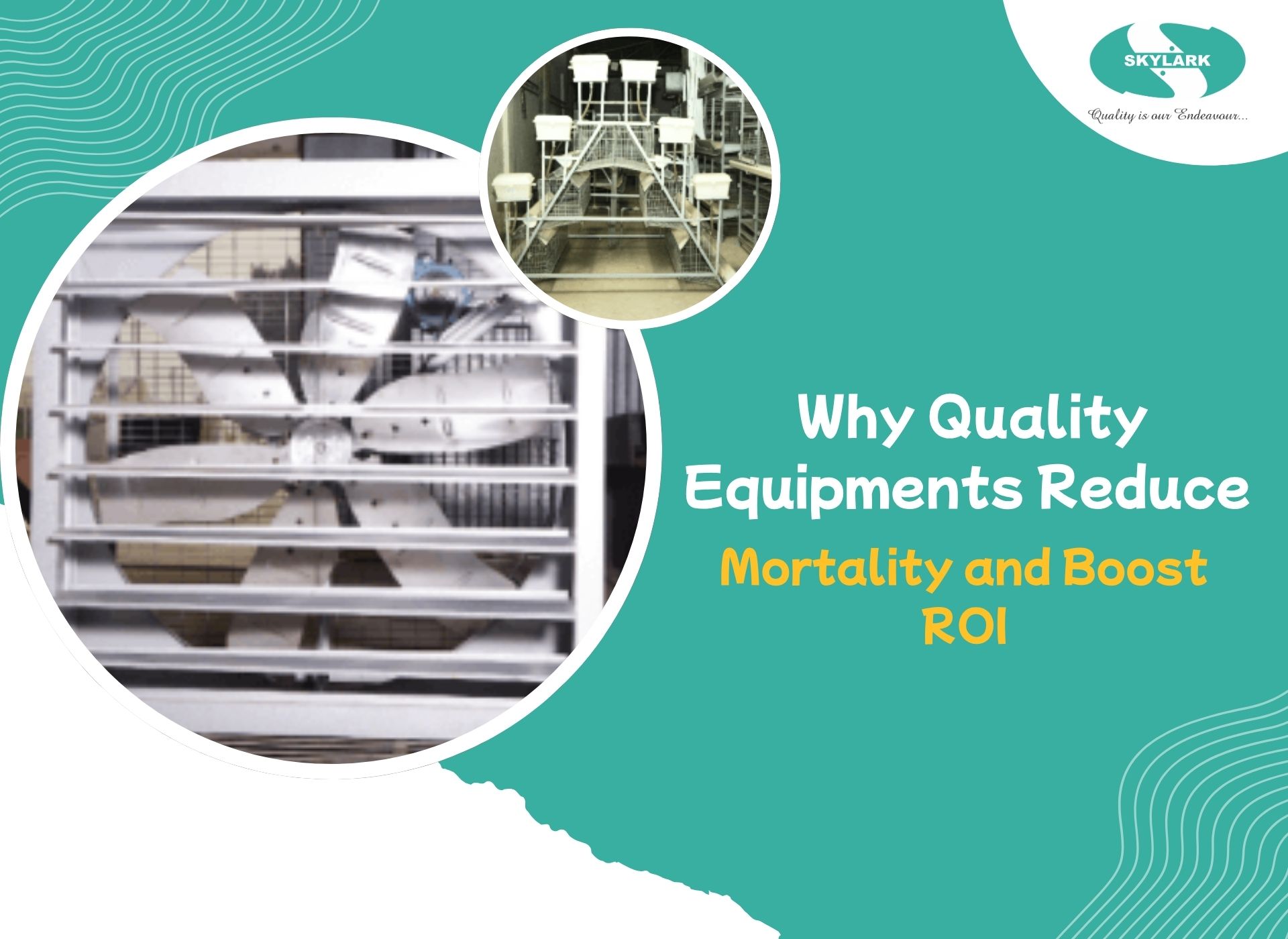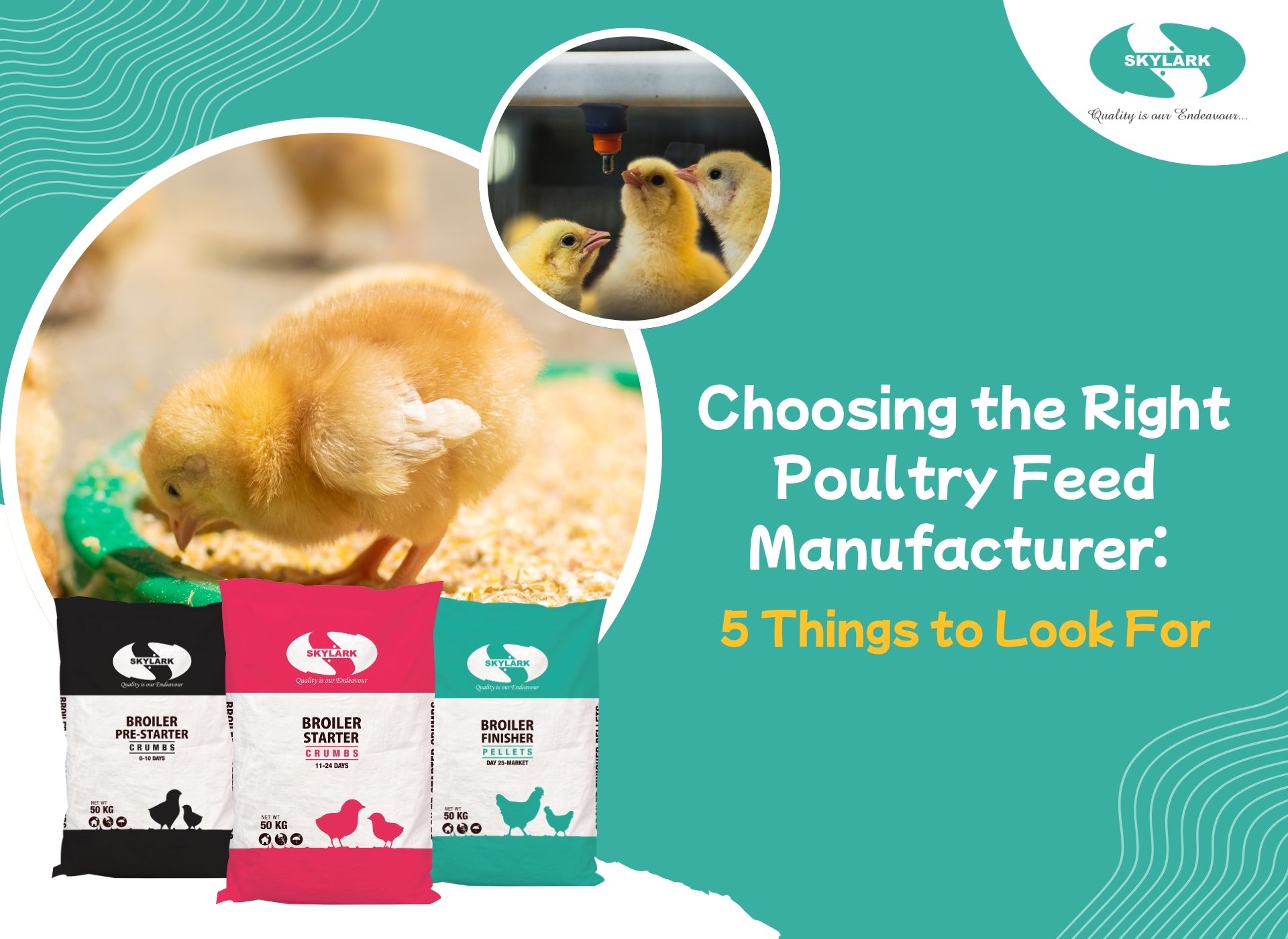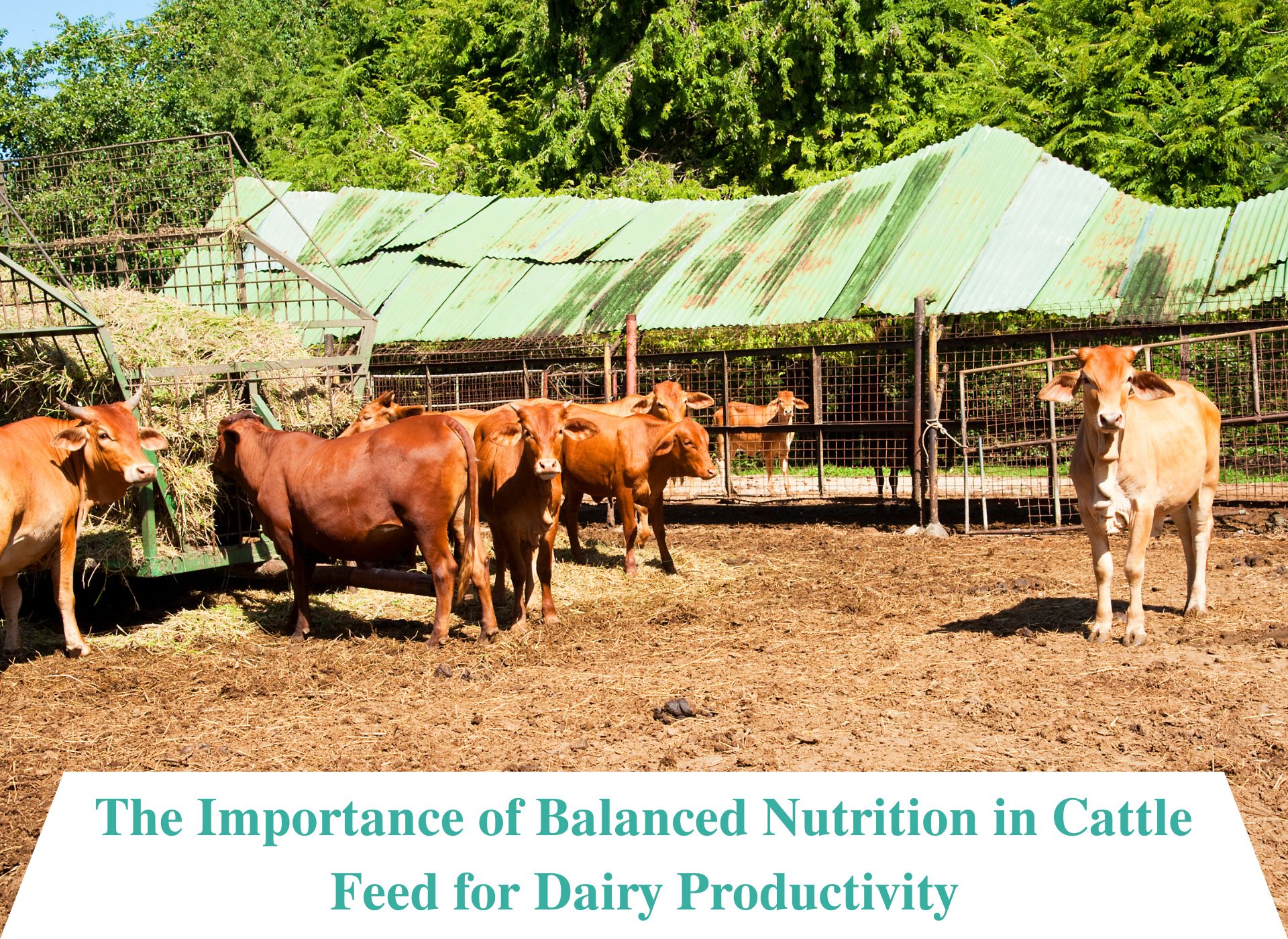In the world of modern poultry farming, biosecurity is the first line of defense against diseases that can wipe out entire flocks. Among the various stages in poultry production, hatcheries play a critical role in shaping the health of future generations of birds. As one of the most advanced poultry hatcheries in India, Skylark Group understands that strong biosecurity practices are essential for producing robust, disease-free chicks.
In this blog, we explore the top five hatchery biosecurity practices that all poultry hatcheries—from small farms to large-scale integrated operations—should implement to ensure healthy, productive flocks.
1. Strict Zoning and Access Control
The first and most crucial biosecurity measure in poultry hatcheries is the creation of biosecure zones to prevent cross-contamination. Hatcheries are divided into separate areas such as:
- Egg reception
- Incubation rooms
- Hatching units
- Chick handling zones
- Waste disposal areas
Each zone has restricted access, with personnel required to wear specific protective gear in every zone. By limiting access and enforcing zoning, poultry hatcheries in India can significantly reduce the risk of introducing pathogens from one area to another.
Skylark’s Practice:
At Skylark Hatchery, every staff member follows a strict entry protocol involving disinfection, footbaths, and the use of sanitized uniforms. Visitor access is highly restricted, and all zones are regularly audited for compliance.
2. Egg Sanitation and Incubation Hygiene
Contamination can begin right at the egg stage. Even before incubation starts, poultry hatcheries must ensure that eggs are handled and sanitized properly. Key practices include:
- Cleaning eggs with approved sanitizing agents
- Storing eggs in disinfected, temperature-controlled environments
- Sanitizing egg trays and trolleys
- Maintaining optimal humidity and temperature in incubators
Hygiene during the incubation process is essential because pathogens can thrive in warm, moist conditions. Proper ventilation, regular cleaning, and maintenance of hatchery equipment are non-negotiable.
Skylark’s Practice:
Skylark, one of the most respected poultry hatcheries in India, uses fully automated, temperature-controlled incubators. Eggs are sanitized using fogging systems, and incubation chambers are cleaned after every cycle to maintain peak hygiene.
3. Water and Air Quality Management
Water and air are two of the most overlooked sources of disease transmission in hatcheries. Poor air circulation can lead to the buildup of bacteria, while contaminated water can carry pathogens directly into the chicks’ environment.
Effective biosecurity demands:
- HEPA-filtered ventilation systems
- Regular water testing and purification
- Fogging and air sanitation technologies
- Routine monitoring of humidity and CO₂ levels
Skylark’s Practice:
Skylark Hatchery uses high-efficiency air filtration systems that reduce dust, pathogens, and allergens. Water is sourced from safe, treated supplies and regularly tested, making Skylark a standout among poultry hatcheries in India.
4. Disinfection of Equipment and Vehicles
Any object or vehicle entering the hatchery has the potential to carry infectious agents. This includes:
- Delivery vans
- Egg collection trays
- Crates and containers
- Vaccination tools
All tools and vehicles must be disinfected at entry and exit points using sprays, fumigation, or UV systems. Equipment used inside the hatchery should be cleaned thoroughly between batches.
Skylark’s Practice:
Skylark’s poultry hatchery facilities are equipped with automated vehicle disinfection stations and a separate sanitation chamber for all incoming equipment. This practice drastically reduces the risk of external contamination.
5. Health Monitoring and Record Keeping
Proactive monitoring and timely response are critical to prevent disease outbreaks. This includes:
- Daily observation of chick health
- Regular blood and fecal testing
- Monitoring of mortality and hatchability rates
- Strict documentation of vaccinations and feed intake
Data-driven decision-making helps poultry hatcheries identify trends, predict problems, and act quickly to prevent disease spread.
Skylark’s Practice:
All Skylark hatcheries maintain digital records of each batch from egg to chick delivery. This traceability helps identify potential issues early and ensures transparency, solidifying Skylark’s position among top poultry hatcheries in India.
Why Biosecurity Is Crucial in Indian Hatcheries
With India’s poultry sector growing rapidly, disease outbreaks such as avian influenza, Newcastle disease, and Salmonella can result in massive economic losses. For poultry hatcheries in India, strict biosecurity protocols are not just best practices—they are a necessity.
Skylark Group, with decades of experience in poultry farming, has set a gold standard for hatchery management. Their commitment to safety, hygiene, and health has made them a trusted name in the industry.
Skylark Hatcheries: A Benchmark in Biosecure Poultry Production
What sets Skylark apart from other poultry hatcheries is their integration of world-class infrastructure, skilled personnel, and continuous innovation.
- Automated egg handling for zero-touch processing
- State-of-the-art HVAC systems for temperature control
- Rigorous staff training programs
- Integration with feed mills and breeder farms
All these factors combine to make Skylark one of the most reliable poultry hatcheries in India, capable of delivering large volumes of disease-free chicks to farms nationwide.
Conclusion
Whether you’re a small-scale poultry farmer or a commercial producer, the foundation of a healthy, productive flock begins at the hatchery. Implementing robust biosecurity measures at the hatchery level is essential for long-term success. From zoning and disinfection to egg handling and health monitoring, these practices must be executed with precision and consistency.
Skylark Hatchery, one of the most advanced poultry hatcheries in India, continues to lead the way in ensuring disease-free flocks through science-backed biosecurity. When chick quality and farm health matter, choosing a trusted hatchery partner like Skylark makes all the difference.
FAQs
Q1. Why is hatchery biosecurity important in poultry farming?
A1. It prevents disease outbreaks, ensuring healthy, productive flocks.
Q2. What is the role of zoning in hatchery biosecurity?
A2. Zoning prevents cross-contamination between different hatchery areas.
Q3. How does Skylark ensure egg hygiene during incubation?
A3. Through egg sanitization, temperature control, and incubator disinfection.
Q4. Are Skylark hatcheries equipped with automated systems?
A4. Yes, they use automated egg handling and HVAC systems for efficiency.
Q5. What makes Skylark a leader among poultry hatcheries in India?
A5. Advanced technology, strict protocols, and decades of experience.







